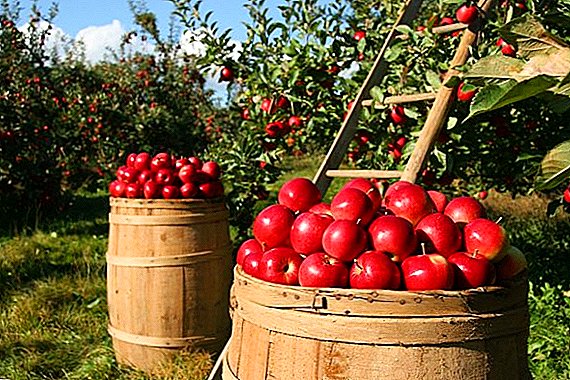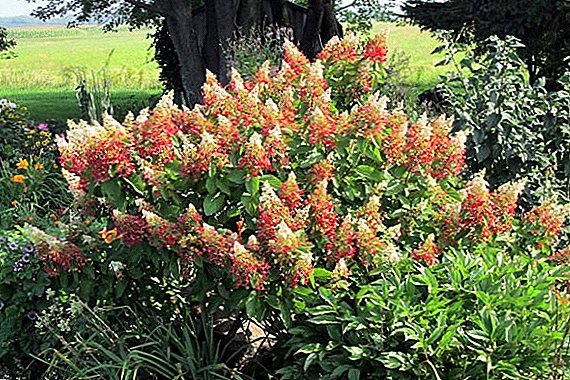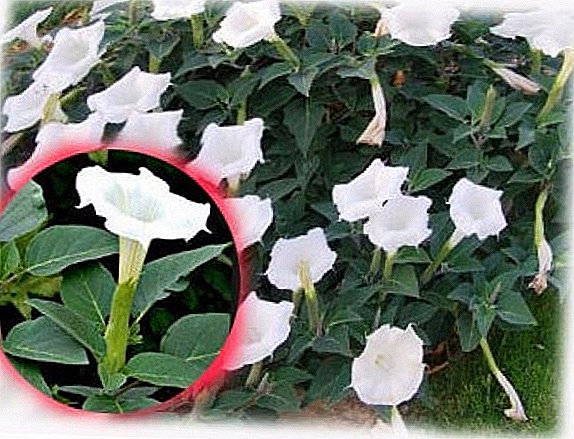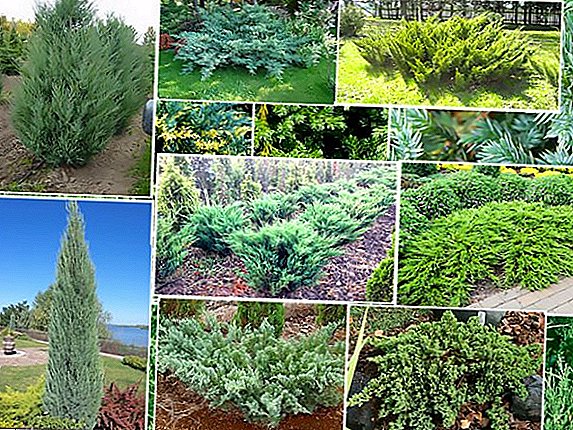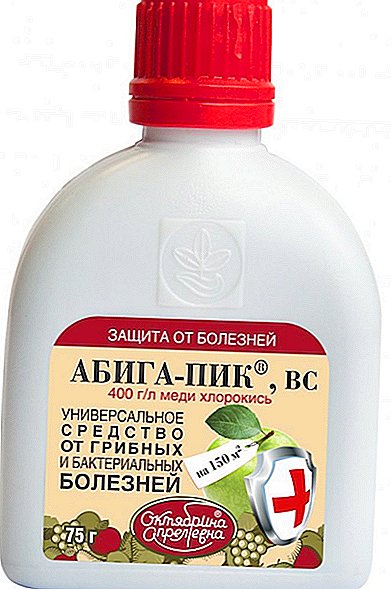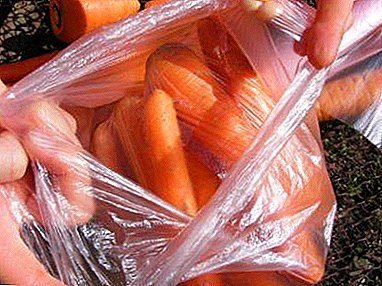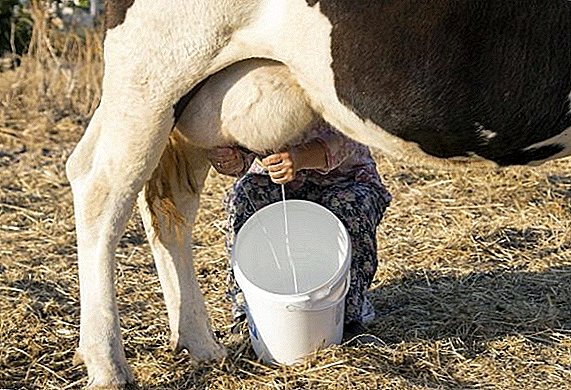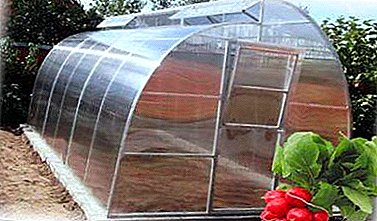
Radish occupies an important place in the diet of people. Its pleasant taste and richness in vitamins have made it very popular. It can be found in the first dishes, and in salads, and as an independent snack. Adults and children love this specific vegetable culture for its unusual, exquisite taste.
Moreover, this vegetable is easy to grow. For this you need to know the basic rules of agricultural radish. Let's tell how to plant and grow radishes in a greenhouse made of polycarbonate.
Features of growing indoors
Growing in a greenhouse and polycarbonate has its own characteristics. The most important difference is that the cultivation takes place in greenhouse conditions.
Also, due to the high degree of heat saving in such a greenhouse, you can begin to grow radish earlier than usual. This greenhouse makes it possible to grow radish all year round with heating.
The advantages of the construction of such material
- Easy to install.
- Strength.
- Durability.
- Does not rust.
- Ability to reinstall to another location.
- Long service life.
- No need to disassemble for the winter.
The better than ordinary greenhouses from the film?
- The possibility of year-round use and harvest.
- Fruit picking in the cold, when the price is especially high.
- No need to constantly change the polyethylene, and beware of its damage.
- The presence of more stable microclimate conditions in the greenhouse.
When is it better to sow radishes - in autumn or early spring?
 The best time for sowing crops of radish is spring, this is due to the biological characteristics of this plant. The optimal timing of planting radishes - no earlier than the end of March - early April. You can also plant it in the fall, before the winter (in September). Radish is a frost-resistant vegetable, its seeds can withstand a decrease in ambient temperature to minus 5 degrees.
The best time for sowing crops of radish is spring, this is due to the biological characteristics of this plant. The optimal timing of planting radishes - no earlier than the end of March - early April. You can also plant it in the fall, before the winter (in September). Radish is a frost-resistant vegetable, its seeds can withstand a decrease in ambient temperature to minus 5 degrees.
The main feature of planting radishes in the spring is that after harvesting, you can plant other vegetables (potatoes, cabbage, eggplants) in the same area. Radish cultures are considered a good precursor for many types of vegetables. This vegetable has a very short growing season. And the time of its collection coincides with the beginning of the planting of other crops.
This allows gardeners to reuse the same land plot twice. Radish is very picky about temperature values. The optimum temperature for growth is 15-18 degrees.
If the temperature is higher, then this plant starts to grow foliage very quickly, and the vegetable itself grows poorly. Sowing is best done in early spring. When planting in late spring, radish is adversely affected by long daylight hours and high temperatures. This is reflected in the size of the roots.
For the cultivation of radish crops need a short light day. With a long daylight radish foliage grows strongly, and the root crop on the contrary develops worse.
In Siberia
Sowing seeds is possible when you can create the optimum temperature in the greenhouse for growing this vegetable. It all depends on the temperature of the air outside and the heating system of your greenhouse. With a good heating system and little frost, you can start sowing seeds.
It all depends on the heating system of the greenhouse, if you can maintain the desired temperature inside, then you will not be afraid of any frosts. With severe frosts in the greenhouse, it is very difficult to maintain the desired temperature, it also requires a lot of material costs, and is generally not profitable. Optimum planting time in the greenhouse - mid-March.
In central Russia, Moscow region and Leningrad region
In central Russia, the conditions for growing radish in a polycarbonate greenhouse are more suitable. In this region, it is possible to grow winter radish in a greenhouse, while maintaining the necessary temperature conditions. The best time to plant in the greenhouse - the beginning of March.
In the Urals
The conditions of the Urals are harsher in comparison with Central Russia, but more favorable than in Siberia. You can start planting crops of radish as soon as it becomes possible to maintain the optimum temperature in the greenhouse. It is recommended to plant in a greenhouse in March.
The best varieties of radish
Selection rules:
- the variety must be sufficiently frost-resistant to withstand unexpected reductions in air temperature and soil in the greenhouse;
- sufficient yield;
- good taste;
- resistance to pests and diseases;
- quality and reasonable price of seed.
| "Heat" | the early grade, matures in 20 days. The color of the fruit - crimson, pinkish flesh. The taste is a little spicy. |
| "Premier" | cold-resistant, has a pungent taste. Resistant to pests. |
| "Volcano" | Late-ripening variety, has very large roots weighing up to three hundred grams, resistant to pests and diseases. |
| "Sachs" | mid-season variety, fruits ripen within one month. The flesh tastes good. |
Step-by-step instruction
Where and for how much can you buy?
 Seed material is recommended to buy from proven and well-known manufacturers and suppliers. This will save you from fraudsters who can sell you one variety instead of another, or sell off-quality seeds that will grow poorly or not germinate at all. It is better to buy seeds of known varieties that have already been tested and give a high yield.
Seed material is recommended to buy from proven and well-known manufacturers and suppliers. This will save you from fraudsters who can sell you one variety instead of another, or sell off-quality seeds that will grow poorly or not germinate at all. It is better to buy seeds of known varieties that have already been tested and give a high yield.
In the metropolitan region, as well as in St. Petersburg, radish seed (a package weighing 3 grams) can be bought at prices ranging from 11 to 36 rubles. Prices vary by brand and supplier. The same variety from different suppliers may have a different price.
Seed preparation for planting
Before planting the seed in the soil you need to sort it and sort it out. It is necessary to separate large seeds from small and seeds with defects.. Large and healthy seeds, with a diameter of 3 mm give good shoots, and a rich harvest. Small and old seeds produce low yields and are prone to tsvetushnosti.
Soil preparation
For planting radish need to digging the soil and harrowing. When grown in greenhouses, a manual soil cop and processing with a rake are used to crush large lumps of soil.
The introduction of manure into the soil is permissible only for 1 year before planting radishesbut not before. This is because radishes do not respond well to fresh manure.
It is recommended autumn dressing of the soil with potash and phosphate fertilizers (superphosphate and potassium nitrate). Feeding should be carried out strictly according to the instructions for the use of this product.
How to plant?
- On a pre-treated landing area in the greenhouse, straight furrows are created with a depth of 2 centimeters.
- At the bottom of the furrows need to pour a small layer of sand and ash.
- The distance in the row between the seeds should be 5 cm. Row spacing - 15 cm. After planting, the seeds are covered with earth in a layer of 1 centimeter.
Radish too deep-set gives root crops with a fibrous structure. Landing is carried out, as a rule, manually. From the inventory are needed: rake, chopper. After planting, the beds need to be watered and mulched to preserve moisture in the soil.
Then you can watch a video about how to plant radishes in a greenhouse:
Care for a young plant
 Spend a moderate watering of radish once every two days. it is necessary to prevent the presence of weeds in the garden and timely remove them. When thickened plantings, it is desirable to thin the crops.
Spend a moderate watering of radish once every two days. it is necessary to prevent the presence of weeds in the garden and timely remove them. When thickened plantings, it is desirable to thin the crops.
If the day is too long, it is advisable to reduce the lighting time - after 18 hours, cover the beds.
At occurrence of diseases and pests, it is necessary to immediately make the treatment of the plantings using insecticides and fungicides. Radish is prone to accumulation of nitrates in fruits. Therefore, it is undesirable to carry out its fertilization with nitrogen fertilizers. Fertilizers are preferably applied to the soil in the fall before spring planting using potash nitrate and superphosphate.
reference. With a lack of moisture in the soil radish prone to flowering.
Possible problems and difficulties
- greenhouse damage - in spite of the fact that these greenhouses are resistant to mechanical damage, but in the case of damage to the walls, they are longer to restore than greenhouses made of polyethylene;
- cold weather - prolonged frosts can reduce crop yields;
- pests and diseases - Radishes can strike, but timely control of them will minimize damage.
With the observance of agrotechnical cultivation and favorable conditions, you will surely get a rich harvest and you will not have any problems.
Growing radish in a polycarbonate greenhouse will allow you to get a harvest in the earliest possible time. That will give the opportunity to realize the harvest at a high price. You will also get tasty and healthy vegetables that you have grown yourself.


